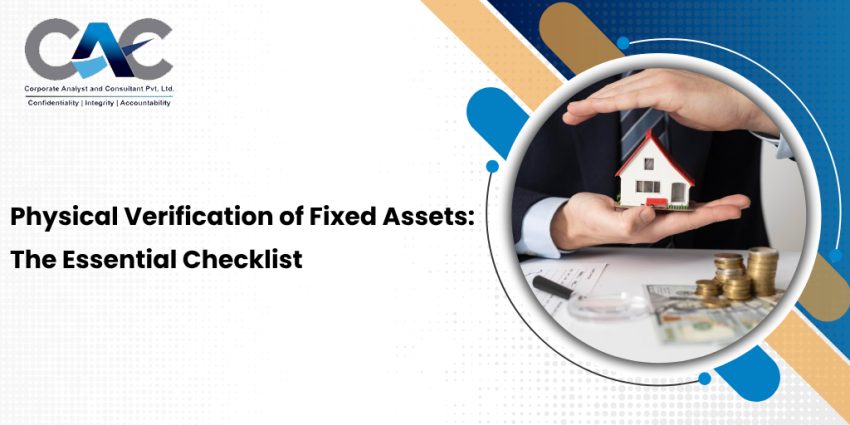For any organization, fixed assets such as buildings, machinery, vehicles, and equipment represent a significant portion of investment. Managing and safeguarding these assets is critical not only for financial accuracy but also for operational efficiency. One of the most effective tools in this process is a physical verification of fixed assets checklist. It provides businesses with a structured approach to ensure that assets are correctly recorded, properly maintained, and not misused.
Ensuring Accuracy in Records
In the long run, the differences between what is documented in books and what is in physical existence usually come up. Misplacement, underutilization and even miswriting down of the assets may occur. The gap could be addressed with the help of the checklist of physical verification of fixed assets checklist, which will ensure that all the assets are listed, properly tagged, and correspond to the financial records of the company. This eliminates mistakes in reporting and compliance problems during audits.
Preventing Loss and Misuse
Large organizations are the most susceptible to theft or damage or unauthorized use of fixed assets. Businesses can withstand financial losses without being aware of them without being checked regularly. With a well-organized checklist, businesses can trace the whereabouts, the condition and utilization of assets. This minimizes chances of abuse and improves accountability in departments.
Supporting Compliance and Audits
Legal requirements usually prescribe effective management and reporting of assets. A fixed assets checklist is a physical check of business to guarantee the businesses are ready to undergo internal and external auditing. Organizations can provide evidence of adherence to accounting standards and legal regulations by ensuring that the records and verification logs are up to date. This is a proactive strategy that will reduce risks of penalties and reputational risks during inspection.
Improving Asset Utilization
Most organizations have assets which are not utilized well since they are not properly monitored. An illustrative case is a machine that is lying idle in one department, yet another department is putting money into new machines without the need to do so. The structured checklist allows us to see the available assets and allocate them better and improve the results of the investment.
Enhancing Financial Planning
Proper validation of fixed assets is important in budgeting and financial planning too. A fixed assets checklist that is a physical checklist can be used to identify the assets that are about to hit the limit of their usefulness, assets that need to be maintained, and assets that can be sold or disposed of. This understanding will enable the businesses to make well-informed financial decisions and plan a capital expenditure in the future.
Simplifying the Process
Asset verification may be a time-sink without a checklist, and this is easy to lose. The standardized checklist divides the process into specific steps, which include checking asset tags, verifying location, evaluating condition, and updating records. This is time saving and consistent through verification cycles.
Conclusion
The modern business world is competitive, and then it is imperative that the fixed assets are managed in an accurate and accountable manner. The use of a physical verification of fixed assets checklist will enable the organizations to avoid losses, be audit ready as well as utilize their resources optimally. Through asset verification as a formal and repetitive exercise, companies protect their investments and improve their financial wellbeing in general.
Also Read: Physical Verification of Fixed Assets: Simple Steps, Big Benefits
















